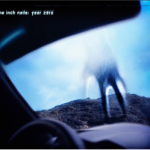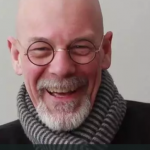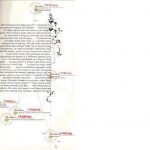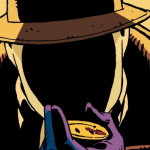2013
Shoba Ghosh contends that in The Book of Portraiture, Steve Tomasula’s exploration of how artists in specific historic moments narrativize uncertainty in the constitution of the subject illuminates the conceptual framework that produces a number of significant global dynamics. According to Ghosh, Tomasula demonstrates that the contemporary subject’s body has become “no more than an agglomeration of brands” that can be “fashioned in the image of desire,” though at the same time, “desire also seeks to deterritorialize itself.” For Ghosh, Tomasula’s aesthetic treatment of that subject-defining tension ultimately assists in “track[ing] the loop by which Empire and Terrorism, State and Extremism, America and its 'other' produce each other simultaneously.”
Ralph Clare sees the new essay collection on William Gaddis as engaging a growing reassessment of the novelist's work. Taking up the task of moving the scholarship past the postmodern theories that framed and determined it for some time, Clare argues that 'The Last of Something' turns out to be the beginning of something more. Approaches in the collection range from new forms of biographical and contextual criticism, to theories of data storage and "bare life," but the nuance and ambition of the scholarship re-asserts the relevance of Gaddis.
Time to get anarchic! Ralph Clare's review of A Corrupted Pilgrim's Guide, the first scholarly take on Thomas Pynchon's 2006 Against the Day, zooms in and illuminates the novel's anarchist framework as the major claim and long-term contribution of the collection. The aesthetics and ethics of anarchism turn out to be not merely a theme in the novel's setting - the late ninetieth to early twentieth-century - but the way it impinges on our current situation.
Adam Pilkey argues that the ARG Year Zero's use of "revealing noise" allows and encourages the audience to help in the building of the narrative by becoming participants in a conspiracy theory within the ARG. Pilkey argues that "The Presence" found in the Nine Inch Nails album and corresponding ARG, Year Zero, symbolizes and denies a truth, which in turn provides a means that furthers the resources that constructs conspiracy theories in this alternate reality.
2012
The good news in Alex Link's review is that Karin Hoepker's No Maps for These Territories begins the necessary work on spatiality in William Gibson's first two trilogies. Still, much remains to be done. Link points the way to a critically productive analysis built on Hoepker's opening moves.
Steve Tomasula in Conversation with Jhave. Recorded at the Banff Centre, Alberta, Canada. 2012-02-21.
Hans Kristian Rustad sympathizes with Curtis White's "latest word." White diagnoses a crisis in contemporary literature in the "Amazonian" monolith dominating the online book industry. Still, Rustad questions White's lack of attention to electronic literature. For Rustad, elit may "save literature from market-oriented book houses that evaluate books by potential profits."
Lila Marz Harper shows the many dimensions of intertextuality between Edwin Abbott's Flatland and Steve Tomasula's VAS. From typography to narratology, Tomasula's "opera in flatland" follows Abbott, in a geometry of fiction that interrogates the biopolitics of today.
Is literature a medium for handling our fears? Anne-Laure Tissut argues that the polysemous multimedial procedures of Steve Tomasula's VAS collapse body and text in a way that both amplifies and cushions fears of mortality, instability, and otherness.
House of Leaves may be on everyone's shortlist of postmodern media-savvy novels, but are we ready for a retrospective collection of essays on Mark Z. Danielewski? According to Daniel Punday's review, Joe Bray and Alison Gibbons' collection says as much about the current state of (post) postmodernist writing as it does about Danielewski's scant oeuvre.
Like a text whose every rewriting is a reinterpretation, the body changes each time its "naturalness" is re-articulated anew. This is the spiraling history traced by Steve Tomasula’s VAS, which depicts the body, according to Alex Link, as "the place where cultural work is naturalized, and where the natural is worked."
Katherine Hayles uses Steve Tomasula's multimodal TOC for a significant engagement with the temporal processuality of complex technical beings. Drawing on Bergon's "duration" and its elaboration in recent theories of technicity and consciousness, Hayles explores the complex temporal enfoldings of living and technical beings, showing that Tomasula's new media novel narrates and materially embodies such assemblages.
Steve Tomasula's TOC is hard to explain, according to Alison Gibbons. You're better off experiencing it in all its multimodal and multimedial complexity. Using human computer interaction and narrative theory, Gibbons shows that the emergent, singular, fractured temporality of reading TOC raises the bar for the new media book.
Can a corporate-dominated Web become an environment conducive to literary activity? The novelist, essayist, and cultural critic Curtis White is skeptical. Responding to criticisms of his account of the devolution of literary publishing and reflecting on the prevalence of market-driven values in online exchanges, White doubts whether literature can distinguish itself in the noisy new media ecology, which he likens to a high-tech prison house.
Kate Pullinger's response to Curtis White's "The Latest Word" ploughs ahead. She tells us that writers today may fear for the future of literature but they keep writing, they go on, they must go on.
This formulation by Joseph Tabbi is being reprinted with permission from the University of Minnesota Press's remixthebook. The original online version can be found here.
Is 'media specific' e-lit criticism nothing but the last gasp of New Criticism and Deconstruction? Lee Konstantinou seems to think so, in this appreciation of the 'astute micro-analyses' (but critique of the theoretical basis) of Moulthrop's close reading/observation of Watchmen.
Dennis Cooper's disorienting novel, The Sluts, complicates reader expectations about subjectivity and identity. As a result, Megan Milks notes that it "is either the most honest or the most dishonest literature I have come across."
2011
In The American Epic Novel, Gilbert Adair presents a "State-of-the-Empire address" that interrogates the epical form in a time where authors no longer talk of writing "The Great American Novel." As Joseph Tabbi finds, such an exploration goes beyond expanding the canon and presents "a new, compelling context for 'the literary' itself."
Too much about too little, and too little about too much. Reviewing the new critical collection Against the Grain: Reading Pynchon's Counternarratives, this critic finds evidence of overproduction in the "Pyndustry."





